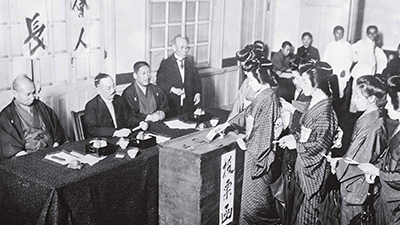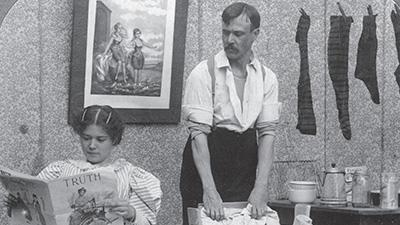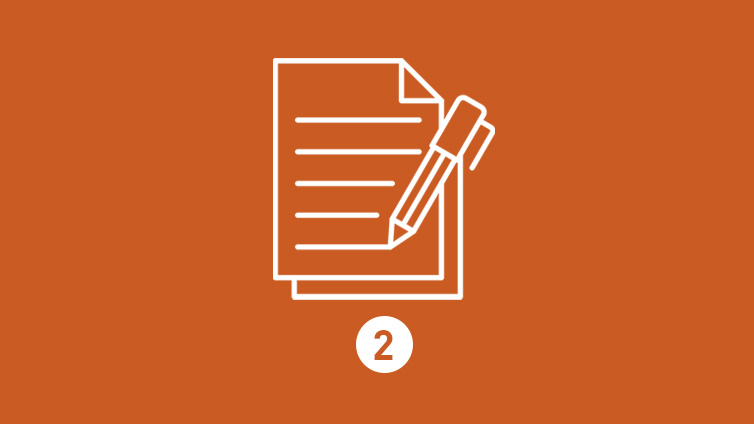Women’s Rights
Driving Question: How did the roles and perceptions of women in society change during the long nineteenth century?
Working-class women suffered the same poor working conditions as their male counterparts, but they were paid less and were excluded from many parts of public and political life. As more women joined the workforce and revolutionary ideas about gender and equality spread, women’s rights movements emerged in many societies.
Learning Objectives:
- Examine the networks of women’s rights activists and compare how their work transformed societies around the world.
- Utilize the historical thinking practice of claim testing to assess the transformation of gender and class relations in the long nineteenth century.
- Use evidence to compare how women’s suffrage movements emerged in different nations.
Vocab Terms:
- feminist
- gender
- middle class
- patriarchal
- reform
- socialism
- suffrage
Opener: Women’s Rights
To teach this lesson step, refer to page 2 of the Lesson 5.8 Teaching Guide.
Our Openers and Closers Guide will provide more information about these short, but important, activities at the beginning and end of each lesson.
Reading this primary source will help you understand how ideas around gender and women’s roles in society were evolving during the long nineteenth century.
Women’s Suffrage Movements
To teach this lesson step, refer to page 3 of the Lesson 5.8 Teaching Guide.
This Comparison One-Pager is your one-stop resource for this fundamental historical thinking skill.
In response to new ideas and the transformations of industrialization, women’s suffrage movements swept the world. In this article and activity, you’ll compare how these movements developed in different places and examine their connections to each other.
-
Guiding Questions
-
Before you read
Preview the questions below, and then skim the article. Be sure to look at the section headings and any images.
While you read
Look for answers to these questions:
- What kind of reform movement helped to stimulate the development of a women’s suffrage movement in New Zealand, and how?
- Why did a government of men give women over 21 the right to vote in the United Kingdom in 1929?
- Why was women’s suffrage so slow to be granted in India, which was also ruled by the United Kingdom?
- What groups of women were excluded from voting in North America before the 1960s?
- What important political change made universal women’s suffrage possible in most of Africa?
After you read
Respond to this question: How do you think achieving women’s suffrage changed political conversations and actions within nation-states?
Gender Roles
To teach this lesson step, refer to page 5 of the Lesson 5.8 Teaching Guide.
Need a good poster? Check out these Claim Testing posters for your classroom.
Do you believe everything on the internet? Check out this blog post about claim testing in the modern world.
The roles of men and women have changed for a variety of reasons. As you read about changing gender roles throughout history, consider whether some of those reasons are still evident in today’s world.
-
Guiding Questions
-
Before you read
Preview the questions below, and then skim the article. Be sure to look at the section headings and any images.
While you read
Look for answers to these questions:
- What were Victorian ideals of gender roles? How did they spread around the world?
- This period saw the rise of the “new woman” in Europe and America. Who were these “new women”?
- What impact did European imperialism have on women in Asia in this period?
- How did women in Nigeria attempt to use their traditional roles as mothers to protest British taxes and colonialism?
- How did the rise of Marxism (socialism) create potential for change in gender roles?
After you read
Respond to this question: How did concepts like nationalism and socialism challenge traditional gender roles?
Reviewing Industrialization
To teach this lesson step, refer to page 11 of the Lesson 5.8 Teaching Guide.
Check out our Historical Thinking Skills Guide for an overview of skills, such as including continuity and change over time.
Understanding the ways things change or stay the same allows you to truly grasp the importance of an event in history.
Closer: Women’s Rights
To teach this lesson step, refer to page 14 of the Lesson 5.8 Teaching Guide.
In this unit, you’ve learned about how the world transformed as a result of new global connections. Now, it’s time to reflect on how what you’ve learned has changed what you think.
Writing: Industrialization Impacts
To teach this lesson step, refer to page 15 of the Lesson 5.8 Teaching Guide.
Our Writing Guide shares our approach to informal and formal writing, including DBQs.
In this writing activity, you’ll use evidence from sources to support an argument that responds to the question: How did industrialization impact society during the long nineteenth century?
Work at Home
To teach this lesson step, refer to page 15 of the Lesson 5.8 Teaching Guide.
What can washing clothes in Victorian England show us about life back then? A lot! Let’s put a load in and see what comes out in the wash!
-
Guiding Questions
-
Before you watch
Preview the questions below, and then review the transcript.
While you watch
Look for answers to these questions:
- Why was it important to soak and beat your clothes for at least 30 minutes?
- Why were household chores like the washing done by women and girls?
After you watch
Respond to this question: How does learning about Victorian washing machines help you understand class and gender roles in this era?







